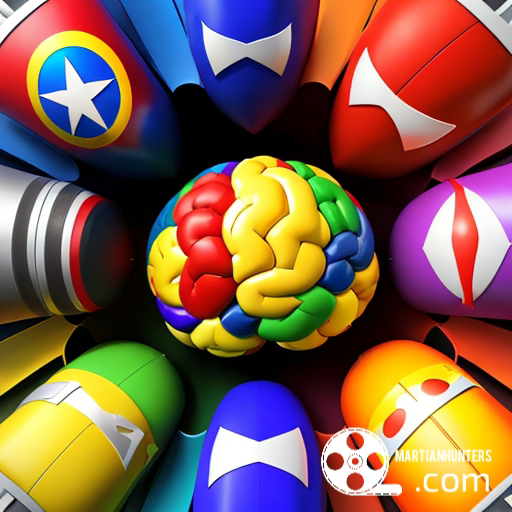Understanding the intricate workings of the human brain is a complex yet fascinating endeavor that has captivated scientists, researchers, and thinkers for centuries. The brain, often referred to as the body's command center, is a marvel of evolution, responsible for orchestrating a multitude of functions ranging from basic survival instincts to complex cognitive processes. This article will delve into the various aspects of how the brain works, shedding light on its structure, functions, and the underlying mechanisms that drive its astonishing capabilities.
The Anatomy of the Brain: A Symphony of Structures
The brain is a complex organ composed of billions of nerve cells, known as neurons, and glial cells that support and nourish them. Structurally, the brain can be divided into several major regions, each responsible for distinct functions. The cerebral cortex, the outermost layer, is responsible for higher-order thinking, sensory perception, and voluntary movement. It is divided into two hemispheres, each further divided into four lobes: the frontal, parietal, temporal, and occipital lobes.
Neurons: The Building Blocks of Communication
Neurons are the fundamental units of the nervous system, and their remarkable ability to communicate through electrical and chemical signals underpins the brain's functionality. Neurons consist of a cell body, dendrites that receive signals, and an axon that transmits signals to other neurons. The synapse, a tiny gap between neurons, is where communication occurs. When an electrical impulse, or action potential, reaches the end of an axon, neurotransmitters are released into the synapse, binding to receptors on the receiving neuron's dendrites and transmitting the signal.
Neural Networks: Wiring for Information Processing
Neurons are interconnected in intricate networks that form the basis for information processing. These networks allow the brain to process sensory input, store memories, and generate thoughts. The brain's plasticity, or ability to reorganize itself, plays a crucial role in learning and adapting to new experiences. Synaptic connections that are frequently used are strengthened, while those that are seldom used may weaken or disappear, shaping the brain's neural pathways.
Sensory Perception and Motor Control
The brain's ability to process sensory information from the environment is a fundamental aspect of its functionality. Sensory organs such as the eyes, ears, and skin convert external stimuli into electrical signals that are transmitted to the brain. The brain then interprets and integrates these signals to create our perception of the world around us. Similarly, motor control involves the brain's coordination of muscles and movement. Motor areas in the cerebral cortex plan and execute voluntary movements, while the basal ganglia and cerebellum contribute to movement coordination and fine-tuning.
Memory Formation and Storage
Memory is a cornerstone of human cognition, enabling us to learn from past experiences and make informed decisions. Memory formation involves three stages: encoding, storage, and retrieval. The hippocampus, a structure nestled deep within the brain, plays a crucial role in transferring information from short-term to long-term memory. Over time, memories are distributed across various regions of the cortex for long-term storage.
Emotions and the Limbic System
The brain's limbic system is closely linked to emotional processing and plays a vital role in motivation, emotional regulation, and memory formation. The amygdala, for instance, is associated with processing fear and other intense emotions, while the prefrontal cortex helps regulate emotions and make rational decisions.
Consciousness and Higher-Order Thinking
Consciousness, the awareness of one's existence and surroundings, is a profound yet enigmatic aspect of brain function. The exact mechanisms that give rise to consciousness remain a subject of intense philosophical and scientific inquiry. The prefrontal cortex, often referred to as the seat of executive function, is involved in complex cognitive processes such as reasoning, decision-making, and self-awareness.
Disorders of the Brain: Unraveling Dysfunction
A myriad of neurological and psychiatric disorders can disrupt the brain's normal functioning. Disorders like Alzheimer's disease, Parkinson's disease, schizophrenia, and depression highlight the complexity of brain function and the devastating impact of dysfunction in various brain regions and neural circuits. Advances in neuroscience continue to shed light on the underlying mechanisms of these disorders, paving the way for potential treatments.
The Future of Brain Research
As technology advances, so too does our ability to explore the intricacies of the brain. Neuroimaging techniques, such as functional magnetic resonance imaging (fMRI) and electroencephalography (EEG), allow scientists to observe brain activity in real-time. Cutting-edge research is focused on mapping the brain's connectome—the intricate web of neural connections—and developing brain-computer interfaces that could revolutionize communication and treatment for neurological disorders.
Jim's Thoughts...
The human brain remains one of the most complex and awe-inspiring mysteries of the natural world. Its intricate structure, interwoven networks, and multifaceted functions continue to captivate researchers and inspire breakthroughs in science and medicine. While much progress has been made in unraveling the brain's secrets, there is still much to learn about how this remarkable organ gives rise to human consciousness, intelligence, and the rich tapestry of human experience.










Comments
Post a Comment